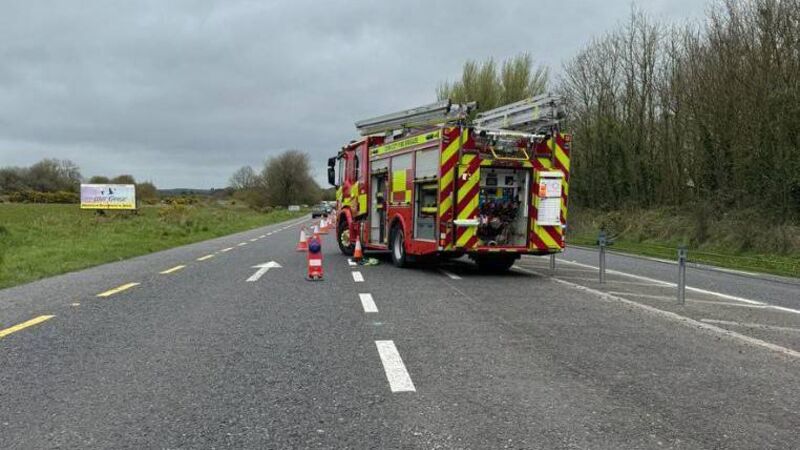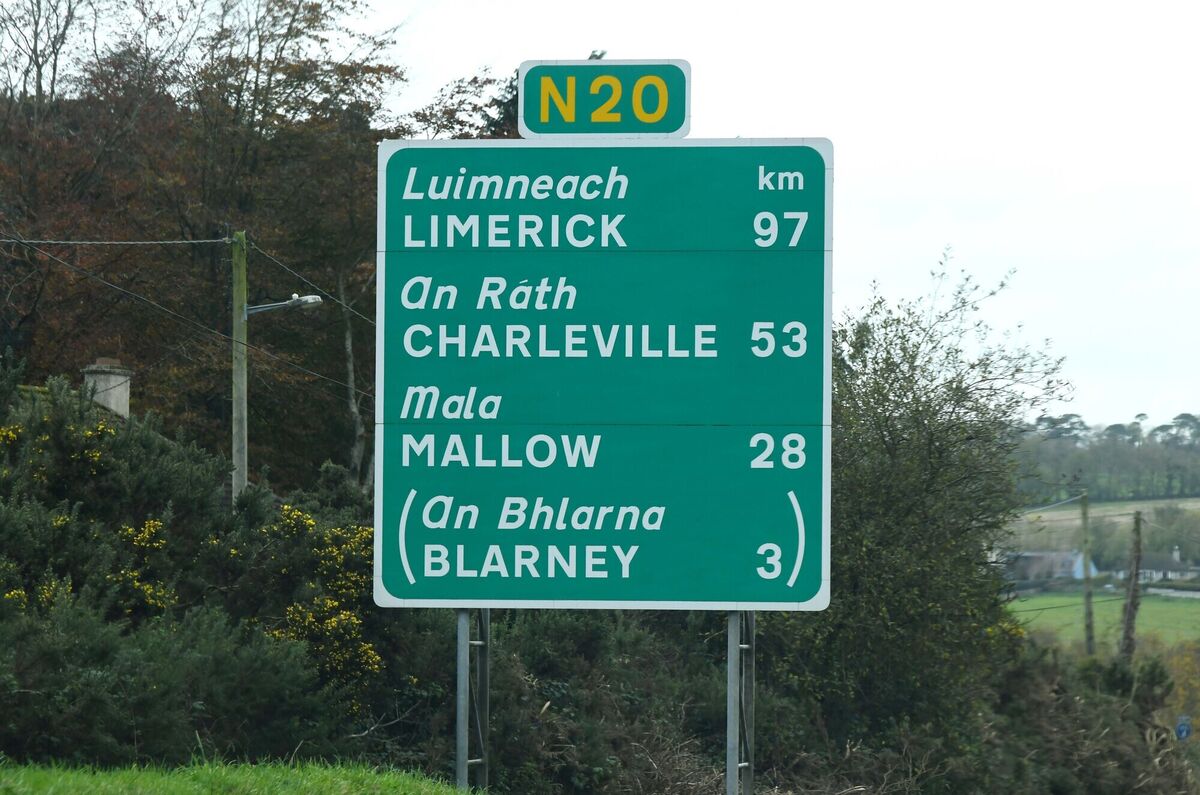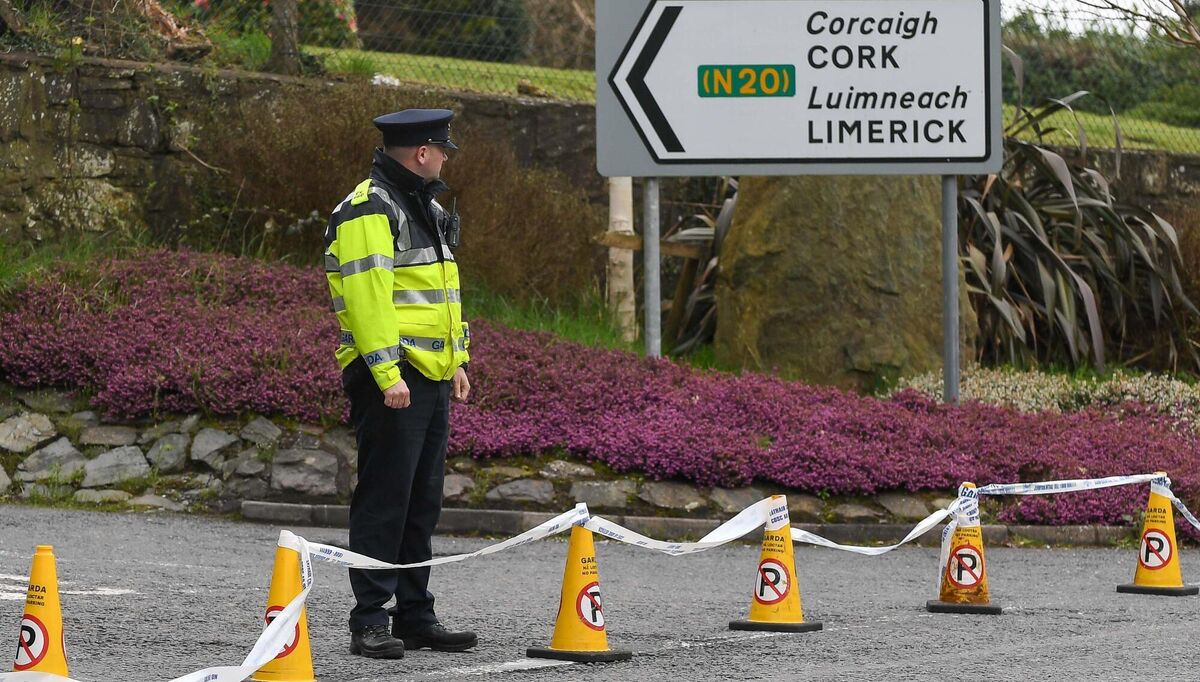Mick Clifford: Cork-Limerick road a ‘torturous bastard’ we’ve just been accepting for decades

Cork City Fire Brigade personnel at the scene of a crash on the N20 in 2024. An analysis of fatalities on the road, compiled for Limerick County Council, showed that those involved in accidents on the N20 were four times more likely to be killed than on other major routes. Picture: Cork City Fire Brigaed/Twitter/X
In May, Peter O’Mahony played his final game at Thomond Park for Munster. A few days previously, he was asked what he wouldn't miss about being a professional rugby player.
His unusual response was the “bastard” of a road between his native Cork and Limerick.
sports journalist Brendan O’Brien captured the sentiment well when he tweeted: “For some players it’s the training that they won’t miss when they retire. Others are happy to leave strict diets and schedules behind them. For Peter O’Mahony, it will be the 'torturous bastard' that is the Cork-Limerick road.”
For some players it’s the training that they won’t miss when they retire
— Brendan O'Brien (@byBrendanOBrien) May 6, 2025
Others are happy to leave strict diets and schedules behind them
For Peter O’Mahony it will be the “torturous bastard” that is the Cork-Limerick road pic.twitter.com/E90cpV1nDE
Many who travel that route with any frequency will agree wholeheartedly. There are motorways now from Dublin to Galway, Cork, Limerick, Waterford. There are major trunk roads elsewhere, like for instance between Galway and Ennis.
Yet the main road between the second and third most populous cities in a wealthy, developed Western country is a bitter blast from the past. There are points along the N20 where you could still be travelling in the 1980s, before the State had any money, back when new roads meant a stretch of dual carriageway for a few miles, selected according to the power of the local politician.

All these decades later, it’s still a case of 'are we there yet?' and the answer is no, not yet.
Maybe when O’Mahony returns as a manager, wins the European Champions Cup with Munster and the World Cup with Ireland, we might get around to turning a shovel on a Cork-Limerick motorway.
Peter O’Mahony was eight years of age in 1997, when the grown-ups first officially acknowledged that the Cork-Limerick N20 required an upgrade.
Around the State, and particularly fanning out from Dublin, new motorways were being planned. Some were even in the early stages of being built. The N20 was earmarked in the National Roads Needs Study that year as one requiring improvements.
"Cork and Limerick are Ireland’s second and third largest cities, located in the southwest and mid-west, respectively,” the report stated.
“The two cities are approximately 100km apart, yet at present the economic interaction and interrelationships between the cities is limited, with poor transport connectivity being a factor.” The work was to be completed by 2014.
The National Development Plan, published the following year to cover 2000 to 2006, stated that it was a government objective to bring the road up to scratch. Very little happened.
In 2008, O’Mahony entered the Munster academy, earmarked as a prospect for the future.

The N20 plan was dogeared at that stage, but the same year the National Roads Authority had a study to identify the preferred route corridor for an “upgraded carriageway” between the two cities.
It came up with a map showing this splendid carriageway bypassing Mallow, Buttevant, and Charleville.
Big plans were afoot all over the country at the time. The M9, linking Dublin and Waterford, was completed in 2010.
Political opinion has it that the fact that local TD Martin Cullen was a big cheese in the cabinet, including at one point holding the Environment portfolio, did the project no harm at all.
However, the volume of traffic today along the M9 is remarkably similar to that which labours along the torturous bastard between Cork and Limerick at around 15,000 vehicles per day.
The three cities are from the same province that O’Mahony graced on the playing field for so long, yet in terms of motorways, their connectivity is from different planets.
By 2010, it did look like things were finally moving. An oral planning hearing was scheduled, and the route mapped out and, to a large extent, agreed. The whole shebang was placed in the hands of An Bord Pleanála and the public, or at least that section of it accustomed to the route, including Cork-based rugby fans, waited for the word.
It didn’t come. In 2011, O’Mahony captained Munster for the first time and made his Champions Cup (then known as the Heineken Cup) debut.
He was at the foothills of a great career, becoming accustomed to the long and winding road, and he must have been dreaming of the days to come when the drive could be some way relaxing.
That dream was called ashore by then transport minister Leo Varadkar a few months later. He told the National Roads Authority to withdraw its planning application due to the cutbacks required by the troika. It would be close to the end of the decade before things got moving again.

Far more important than connectivity or comfort, the absence of a proper road on such a route was an indictment on the priority of road safety.
The oral hearing in 2010 heard that between 1996 and 2007, 35 people had lost their lives on the route.
A new upgraded road would save 70 lives within its first 30 years, an engineer outlined. A later analysis of fatalities on the road, compiled for Limerick County Council, showed that those involved in accidents on the N20 were four times more likely to be killed than on other major routes.
Deaths resulted from 2% of road traffic accidents nationally but this jumped to 8% on the road in question.
During those wilderness years when there was no movement, O’Mahony featured prominently for Ireland. He was spending more time on the road enjoying the M8 to Dublin, diluting the hardship of that torturous bastard.
The project got back on track in 2018 when it was announced that the road would now be upgraded to a full motorway, the M20.
Things stumbled on for a while and then there was further contretemps about the route. Some business organisations in north Cork wrote to minister Simon Coveney saying they opposed a full motorway between the two cities and it would be better to just build out from the existing M8, at either Fermoy or Mitchelstown to connect to Limerick.
A serious blow to the proposed motorway was dealt by environment minister Eamon Ryan in 2021. As a Green, the minister was not a great fan of roads in general, not to mind motorways.
“There are so many road projects already committed to, if we spent on all of them, we wouldn’t have money for everything but we are not ruling them out, we are not saying definitely ‘no’,” he said.
Three years later, he did say no, more or less, when he announced that a new route for the “upgrade of the N20” had been identified.
Motorway, what motorway?
By then, the sun was beginning to set on O’Mahony’s career, not to mind his prospects of ever having a relaxing drive to work. He has had quite an amazing career, and earned himself a place in the pantheon of the greats of Munster Rugby.
The upgrade of the road, which is a downgrade from the mooted motorway, is now scheduled to be completed at a cost of €850m in 2027. But, as noted at an earlier stage of this long and painful saga, you’d be a fool to hold your breath waiting for it. Still, it remains a mystery wrapped up in politics and vested interests, as to why such a route is, in places, a relic from a bygone age.
- This article was originally published on May 14, 2025.





